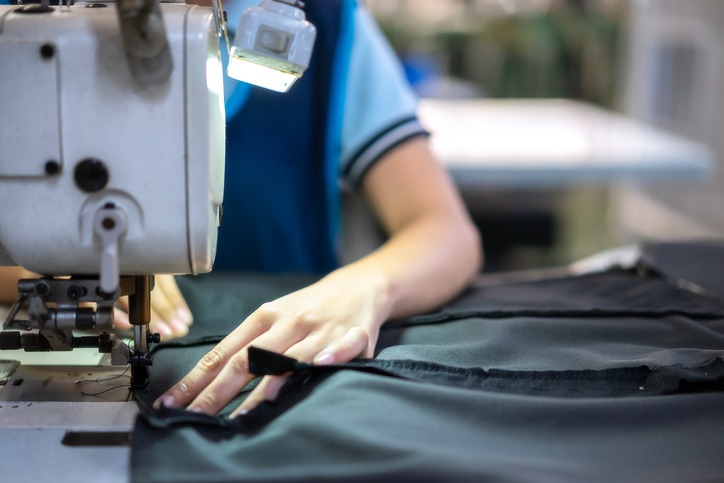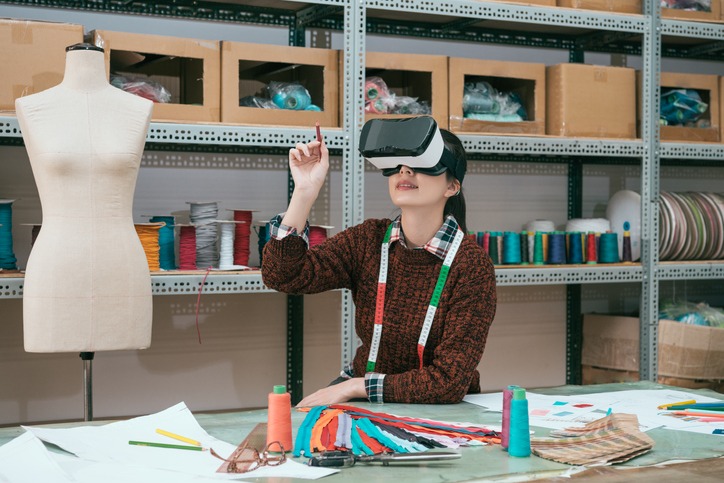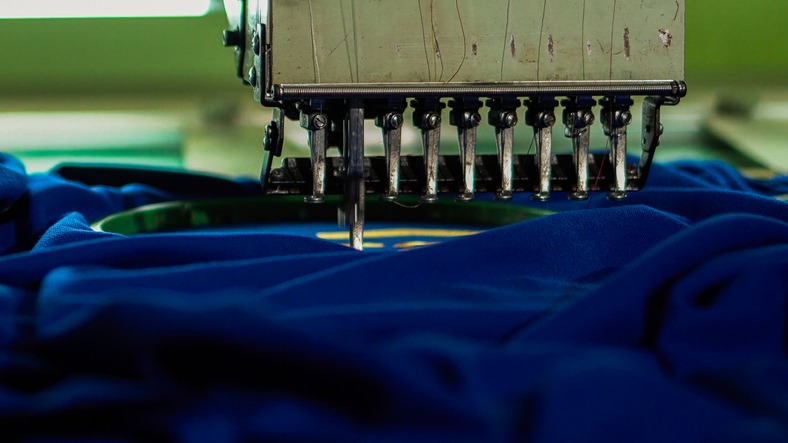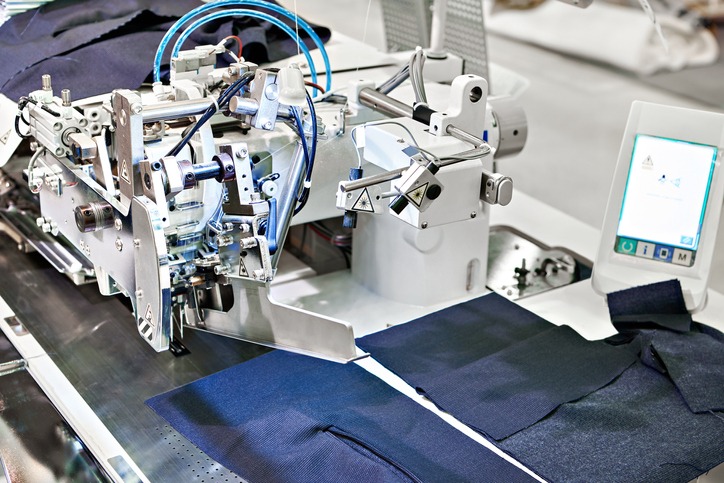The world of fashion has always been dynamic, reflecting the changes and aspirations of society. In recent years, this dynamism has been significantly influenced by technological advancements. These innovations have not only transformed garment making from a design and production perspective but also revolutionized the way we interact with clothing.
Early Innovations in Garment Making
1. The Spinning Jenny (1764)
The inception of the Spinning Jenny in 1764 marked a pivotal moment in the history of garment making. This invention, created by James Hargreaves, transformed the process of yarn production, which was a critical component in the textile industry. Before the Spinning Jenny, spinning was a laborious task, done manually using a spinning wheel. This process was not only time-consuming but also limited in productivity, as it allowed for the creation of only one yarn spool at a time.
The Spinning Jenny revolutionized this process by enabling multiple spools of yarn to be spun simultaneously. Initially designed to spin eight threads at once, the machine evolved to handle up to 120 threads simultaneously. This exponential increase in productivity had several profound impacts:
- Increased Efficiency: The ability to spin multiple threads at once drastically reduced the time required to produce yarn, accelerating the entire fabric manufacturing process.
- Cost Reduction: With higher efficiency came a decrease in the cost of yarn production. This made yarn and subsequently, fabric, more affordable and accessible to a broader market.
- Employment Dynamics: The Spinning Jenny was a precursor to the mechanization of the textile industry. While it initially allowed spinners to produce more in less time, it eventually led to the need for fewer laborers in spinning, a trend that continued with subsequent technological advancements.
- Quality and Consistency: The machine not only sped up production but also ensured greater uniformity and consistency in the yarn produced, leading to higher quality fabrics.
The Spinning Jenny was a key invention in the early stages of the Industrial Revolution. It not only transformed the textile industry but also set the stage for further technological innovations in garment making.
2. The Sewing Machine (1790)
The invention of the sewing machine in 1790 by Thomas Saint marked another significant technological advancement in garment making. Prior to this, all sewing was done by hand, which was a meticulous and time-intensive process. The introduction of the sewing machine fundamentally changed this, impacting both the speed and the methodology of garment construction.
Key Impacts of the Sewing Machine:
- Increased Production Speed: The sewing machine allowed garments to be stitched much faster than hand sewing. This efficiency was crucial in meeting the growing demand for clothing, especially in urban areas during the Industrial Revolution.
- Consistency and Quality: Machine stitching offered a level of precision and consistency that was difficult to achieve by hand. This led to an improvement in the overall quality and durability of garments.
- Industrialization of Garment Making: The sewing machine was central to the development of the ready-to-wear clothing industry. It enabled mass production of garments, which was previously not feasible.
- Employment Shift: The sewing machine created new jobs in garment factories while also impacting traditional tailors and seamstresses. It required a different skill set, leading to a shift in the labor market within the textile industry.
- Fashion Accessibility: With the ability to mass-produce clothing, fashion became more accessible to the general population. This democratization of fashion was a significant social change, altering the way people viewed and consumed clothing.
These early innovations laid the groundwork for the modern garment making industry. The Spinning Jenny and the sewing machine were not just inventions; they were catalysts that triggered a series of changes in how clothing was produced, consumed, and perceived, setting the stage for the technological advancements that followed in the centuries ahead.
Industrial Revolution to the 20th Century
Mass Production: The Rise of Factory Systems
The transition from handcraft to industrial manufacturing during the Industrial Revolution dramatically altered garment making. The establishment of factory systems in the late 18th and early 19th centuries marked a significant shift from artisanal, small-scale production to large-scale, mechanized production. Check out our new post and discover how traditional and modern textile manufacturing methods differ.
Key Developments in Mass Production:
- Assembly Line Techniques: The introduction of assembly lines enabled the division of labor, where each worker specialized in a specific task. This specialization significantly increased efficiency and productivity.
- Increased Output: Factories could produce garments on a scale previously unimaginable. This mass production made clothing more affordable and accessible to a wider population, contributing to the growth of the consumer culture.
- Standardization of Sizes: With mass production came the need for standardization, particularly in sizes. This was a stark departure from the tailor-made, custom-fit clothing of the past.
- Globalization of Fashion: Mass production also facilitated the global distribution of clothing, spreading fashion trends more widely and rapidly than ever before.
Synthetic Fibers: Introduction of Materials like Nylon and Polyester
The 20th century brought a significant innovation in garment making with the development of synthetic fibers. The introduction of materials like nylon, invented in 1935, and polyester, developed in the 1940s, marked a turning point in the textile industry.
Impacts of Synthetic Fibers:
- Diversity in Textiles: Synthetic fibers offered properties not found in natural fibers, such as increased durability, elasticity, and resistance to shrinking and wrinkling.
- Cost-Effectiveness: These fibers were often less expensive to produce than natural fibers, making garments more affordable.
- Innovation in Fabric Blends: The blending of synthetic fibers with natural fibers led to the creation of new fabric types, offering improved qualities like better moisture wicking and thermal insulation.
- Environmental Concerns: While beneficial in many ways, the production and disposal of synthetic fibers also raised environmental concerns, particularly regarding non-biodegradability and pollution.
Modern Technological Advancements
3D Design Software: Transforming Design Visualization
In recent years, 3D design software such as CLO3D has revolutionized the way garments are designed. These tools have transformed various aspects of garment design:
- Realistic Visualizations: Designers can create highly accurate and realistic 3D models of garments, allowing for a clear visualization of the final product before any physical sample is made.
- Efficiency in Design Process: Changes to designs can be made quickly and easily, significantly reducing the time and cost associated with multiple physical prototypes.
- Sustainability: By reducing the need for physical samples, 3D design software contributes to a reduction in material waste, aligning with the growing emphasis on sustainability in the fashion industry.
- Collaboration: These tools facilitate easier collaboration between designers, manufacturers, and clients, as designs can be shared and modified digitally, regardless of geographical location.
Virtual Prototyping: Reducing the Need for Physical Samples
Virtual prototyping in garment making has been a game-changer, especially in terms of sustainability and efficiency.
Benefits of Virtual Prototyping:
- Reduced Time to Market: Virtual prototypes can be developed much faster than physical samples, accelerating the design and production process.
- Cost Reduction: The decreased reliance on physical samples for each design iteration saves material costs and reduces labor expenses.
- Enhanced Creativity: Designers are free to experiment with styles, cuts, and colors digitally without the constraints of physical sample production, encouraging creative exploration.
- Market Testing: Virtual prototypes can be used for market testing, allowing designers to gauge consumer response to styles before they are physically produced.
The journey from the Industrial Revolution to the 20th century brought fundamental changes to garment making, primarily through the rise of mass production and the introduction of synthetic fibers. In the modern era, digitalization, particularly through 3D design software and virtual prototyping, is further revolutionizing this field, enhancing both creativity and efficiency while addressing environmental concerns.
Sustainable and Smart Materials in Garment Making
Recycled Fabrics: Innovations in Recycling Technologies
The push towards sustainability in the fashion industry has led to significant advancements in fabric recycling technologies. Recycled fabrics are now a key component in reducing the environmental footprint of garment production.
Developments in Recycled Fabrics:
- Advanced Recycling Processes: Technologies have evolved to efficiently break down various materials, including cotton, polyester, and other blends, into their basic fibers. These fibers are then reused to create new fabrics, reducing waste and the need for virgin resources.
- Quality and Durability: Modern recycling techniques have improved the quality and durability of recycled fabrics, making them comparable to their non-recycled counterparts. This advancement has encouraged more designers and brands to incorporate recycled materials into their collections.
- Diverse Sources: Recycled fabrics are now being made from a variety of sources, including post-consumer plastic bottles, discarded fishing nets, and even used garments. This diversity in sources helps in tackling different waste streams.
- Consumer Awareness: The growing consumer demand for sustainable products has spurred the development and use of recycled fabrics, as consumers become more environmentally conscious.
Smart Textiles: Integration of Technology for Functionality
Smart textiles represent a cutting-edge development in garment making, where technology is embedded in fabrics to provide added functionality. Learn more about the innovations in fabric and material science in our latest post.
Key Features of Smart Textiles:
- Heating and Cooling Systems: Some smart textiles are equipped with embedded heating elements or materials that can provide cooling through moisture-wicking or phase-change materials.
- Lighting and Color Changing: Integration of LED lights or materials that change color in response to environmental stimuli (like temperature or light) is another innovative feature.
- Health Monitoring: Some smart fabrics can monitor physiological parameters such as heart rate, body temperature, and even stress levels, offering potential applications in healthcare and fitness.
- Energy Harvesting: There are developments in incorporating tiny solar cells or kinetic energy harvesters into textiles, enabling the generation and storage of energy.
Automation in Production
Robotic Sewing Arms: Automated Sewing Lines
Robotic sewing arms represent a significant technological leap in garment production, automating one of the most labor-intensive aspects of garment making.
Impacts of Robotic Sewing Arms:
- Increased Production Speed: These robotic systems can operate continuously, significantly increasing the production rate compared to manual sewing.
- Consistency and Quality: Robots provide a high level of precision and consistency, reducing the occurrence of errors and defects in sewing.
- Labor Shifts: While robotic sewing arms reduce the need for manual sewing labor, they also create demand for skilled technicians to maintain and operate these machines.
- Customization at Scale: Advanced robotic systems are increasingly capable of handling complex sewing tasks, allowing for greater customization in mass production settings.
Laser Cutting Technology: Precision and Efficiency in Cutting Fabrics
Laser cutting technology has revolutionized the way fabrics are cut in garment production, offering unparalleled precision and efficiency.
Advantages of Laser Cutting:
- High Precision: Lasers can cut intricate patterns and details with a level of precision far beyond manual or traditional mechanical cutting.
- Efficiency and Speed: Laser cutting is much faster than conventional cutting methods, significantly reducing the time taken to cut fabrics for mass production.
- Reduced Waste: The precision of laser cutting results in more efficient use of material, reducing waste.
- Versatility: Lasers can cut a wide range of materials and thicknesses, providing flexibility in garment production.
Sustainable and smart materials are reshaping the landscape of garment making, with recycled fabrics and smart textiles offering new possibilities in terms of sustainability and functionality. In production, automation through robotic sewing arms and laser cutting technology is enhancing efficiency and precision, marking a new era in garment manufacturing. These advancements reflect the industry’s ongoing commitment to innovation, efficiency, and environmental responsibility.
Customization and Personalization in Garment Making
Body Scanning Technology: Tailored Fitting Solutions
The integration of body scanning technology in garment making marks a significant stride towards customization and personalization. This technology enables the creation of clothing that fits perfectly to an individual’s body shape and size.
Advancements in Body Scanning Technology:
- Precision in Measurements: Body scanners use various technologies, like 3D imaging and infrared sensors, to capture accurate body measurements. This precision ensures a better fit compared to traditional measuring techniques.
- Efficiency and Convenience: The process is quick and can be done without physical contact, offering convenience to consumers. It also streamlines the tailoring process, saving time for both customers and manufacturers.
- Integration with Production: Scanned data can be directly used in garment design and production, reducing the chances of errors in the final product.
- Customization at Scale: This technology makes it feasible to offer customized fitting options on a larger scale, something that was traditionally limited to bespoke tailoring.
AI in Fashion: Algorithms Predicting Style Preferences and Sizes
Artificial Intelligence (AI) in fashion has brought about a paradigm shift in how consumer preferences and sizes are understood and catered to.
Role of AI in Fashion Customization:
- Predictive Styling: AI algorithms analyze consumer data, including past purchases and browsing history, to predict style preferences, offering personalized fashion recommendations.
- Size Prediction: By analyzing customer data, AI can accurately predict the correct size for individual customers, reducing the instances of returns due to sizing issues.
- Trend Forecasting: AI helps in identifying emerging fashion trends by analyzing data from various sources, enabling brands to create designs that are more likely to resonate with their target audience.
Supply Chain and Logistics
Blockchain: Traceability and Transparency in the Supply Chain
Blockchain technology is being increasingly adopted in the fashion industry’s supply chain to enhance traceability and transparency.
Benefits of Blockchain in Supply Chain:
- Improved Traceability: Blockchain allows for the tracking of garments right from the raw material source to the retail shelf, ensuring authenticity and ethical production practices.
- Transparency with Consumers: Consumers can access the blockchain to verify the origin and journey of their garments, which is particularly important for those concerned about ethical and sustainable practices.
- Counterfeit Prevention: The technology makes it difficult to introduce counterfeit products into the supply chain, protecting brand integrity.
- Efficient Recall Process: In case of a product recall, blockchain enables quick identification and traceability of the affected items.
Automated Warehousing: Robotics in Logistics and Inventory Management
Automated warehousing, powered by robotics, has transformed logistics and inventory management in the garment industry.
Impact of Automated Warehousing:
- Efficiency in Storage and Retrieval: Robotics in warehousing allows for more efficient storage systems and faster retrieval of items, streamlining the supply chain.
- Reduced Error Rates: Automation minimizes human errors in inventory management, leading to more accurate stock levels and order fulfillment.
- Scalability: Automated systems can be scaled up or down depending on demand, providing flexibility to businesses.
- Labor Optimization: While reducing the need for manual labor in certain tasks, automated warehousing also creates demand for skilled workers to maintain and operate these systems.
The Impact of Technology on Fashion Retail
Online Shopping Experience
AR and VR: Virtual Fitting Rooms and Immersive Experiences
Augmented Reality (AR) and Virtual Reality (VR) technologies are redefining the online shopping experience in fashion retail.
- Virtual Fitting Rooms: AR and VR enable customers to try on clothes virtually, giving them a better idea of how a garment would look on them.
- Immersive Shopping Experience: These technologies provide an immersive shopping experience, simulating a physical store environment, which can increase customer engagement and satisfaction.
AI Chatbots: Enhanced Customer Service
AI-powered chatbots have become an integral part of customer service in online fashion retail.
- 24/7 Customer Support: Chatbots provide round-the-clock assistance, answering queries, and offering support, which enhances the overall customer experience.
- Personalized Recommendations: These chatbots can provide personalized shopping suggestions based on the customer’s browsing and purchase history.
- Efficient Problem Resolution: AI chatbots can quickly resolve common issues and queries, reducing the need for human customer service intervention for basic inquiries.
The garment making industry is witnessing a shift towards greater customization and personalization through technologies like body scanning and AI. In supply chain and logistics, blockchain and automated warehousing are enhancing efficiency and transparency. In retail, the online shopping experience is being transformed by AR, VR, and AI chatbots, offering customers an engaging and convenient way to shop. These technological advancements are not only improving efficiencies and experiences but are also setting new standards in the fashion industry.
Data Analytics in Fashion
Trend Prediction: Analyzing Consumer Data for Trend Forecasting
Data analytics has become a cornerstone in the fashion industry for predicting future trends. By analyzing vast amounts of consumer data, including purchasing patterns, online browsing behaviors, and social media interactions, fashion brands can anticipate future trends more accurately.
Key Aspects of Data-Driven Trend Prediction:
- Real-Time Analysis: Data analytics tools provide real-time insights, allowing brands to react quickly to emerging trends.
- Consumer Behavior Insights: Understanding what consumers are looking for, even before they explicitly express it, helps brands stay ahead in the highly competitive fashion market.
- Personalized Experiences: Analytics not only help in general trend forecasting but also enable brands to tailor their offerings to individual consumer preferences.
Inventory Management: AI for Efficient Stock Control
AI in inventory management transforms how fashion retailers manage their stock, leading to more efficient and cost-effective operations.
Advancements in AI-Powered Inventory Management:
- Demand Prediction: AI algorithms predict future product demand, helping retailers to optimize stock levels and reduce overstock or stockouts.
- Automated Reordering: AI systems can automatically reorder stock based on predicted demand, sales patterns, and inventory levels, streamlining the supply chain process.
- Waste Reduction: Efficient stock control leads to less unsold inventory, which is crucial for reducing waste in the fashion industry.
Ethical Considerations and Challenges
Environmental Impact: Sustainable Technologies
The environmental impact of the fashion industry has led to a focus on sustainable technologies aimed at reducing the industry’s ecological footprint.
Sustainable Technology Initiatives:
- Water Conservation: Technologies that reduce water usage in fabric dyeing and treatment processes.
- Energy-Efficient Manufacturing: Adoption of renewable energy sources and energy-efficient machinery in production processes.
- Chemical Management: Developing safer and more environmentally friendly chemicals for use in garment production.
Upcycling and Recycling: The Role of Technology in Promoting Sustainability
Technological advancements have significantly enhanced the viability and efficiency of upcycling and recycling initiatives in the fashion industry.
- Improved Recycling Techniques: Advanced technologies enable the recycling of more complex materials and blends, which were previously considered non-recyclable.
- Upcycling Creativity: Technology assists designers in finding innovative ways to upcycle waste materials into high-quality fashion products.
Labor Market Changes: Job Displacement vs. Creation
The adoption of new technologies in garment making has led to changes in the labor market, with both job displacement and creation occurring.
- Displacement of Traditional Roles: Automation and AI have reduced the demand for certain skill sets, particularly in repetitive and manual tasks.
- Creation of New Jobs: Conversely, new technologies have created jobs in areas such as data analysis, machine operation, and technology maintenance.
Skill Development: Adapting to a Technologically Advanced Workspace
As the garment industry becomes more technologically advanced, there is a growing need for skill development and training.
- Technical Training: Workers need training in new technologies such as AI, robotics, and data analytics.
- Continuous Learning: The rapid evolution of technology requires a workforce that is adaptable and committed to ongoing learning.
Future of Garment Making
Biotechnology in Fabrics: Developments in Bioengineered Materials
Biotechnology is set to play a significant role in the future of fabrics, with developments in bioengineered materials.
- Sustainable Materials: Biofabrication of materials such as bio-leather and spider silk offers sustainable alternatives to traditional materials.
- Functional Fabrics: Biotech is also being explored for creating fabrics with unique properties, like enhanced strength or the ability to self-heal.
AI and Machine Learning: The Potential for Autonomous Design Processes
AI and machine learning are poised to further automate design processes in garment making.
- Design Automation: AI can analyze trends and consumer preferences to generate design concepts, reducing the time and resources spent in the design phase.
- Personalized Design: Machine learning algorithms can create customized designs based on individual consumer data.
The Role of Consumers
Consumer Awareness: How Technology Informs Purchasing Decisions
Increased consumer awareness, aided by technology, is influencing purchasing decisions in the fashion industry.
Informed Choices: Consumers have access to more information about products, including their environmental and ethical impacts, which influences their buying decisions.
The Demand for Sustainable Products: Driving Innovation through Consumer Behavior
The growing consumer demand for sustainable products is a driving force behind innovation in the fashion industry.
- Market Shift: Consumer preferences are pushing brands to adopt more sustainable practices and technologies.
- Transparency and Accountability: Consumers are holding brands accountable for their environmental and social impacts, leading to more transparent and ethical practices.
Data analytics is reshaping trend prediction and inventory management in fashion. Ethical considerations like environmental impact and labor market changes are driving the adoption of sustainable technologies and skill development. The future of garment making looks toward innovations in biotechnology and AI, with consumer awareness and demand for sustainability playing a crucial role in shaping industry practices.
Conclusion
The journey of garment making, from traditional handcrafting to the integration of cutting-edge technologies, reflects a remarkable evolution. Today, the industry stands at a pivotal crossroads, shaped by innovations in digitalization, automation, and sustainability. These advancements are not merely trends but are essential components in addressing the challenges and opportunities of the 21st century.
The introduction of data analytics, AI, and machine learning in trend prediction and inventory management demonstrates a shift towards a more predictive and responsive approach in fashion retail. This evolution is significant in meeting the dynamic demands of consumers and in driving operational efficiency. The role of blockchain in supply chain management and the adoption of automated warehousing and robotics in logistics signify a leap towards transparency and efficiency, crucial for the modern consumer who values ethical and sustainable practices.
Moreover, the industry’s focus on sustainable and smart materials, including recycled fabrics and smart textiles, addresses critical environmental concerns. This shift not only reflects a technological triumph but also a moral imperative in reducing the industry’s ecological footprint. The advancements in biotechnology and the exploration of bioengineered materials further underscore a commitment to innovation that respects our planet’s boundaries.
The adoption of technologies such as body scanning and 3D design software is revolutionizing customization and personalization in fashion, offering consumers unique and tailored experiences. However, these technological strides also bring forth challenges, particularly in the labor market, where there is a growing need for skill adaptation and development. This change underscores the importance of balancing technological advancement with human capital development.
As we look to the future, the potential for further innovations, such as autonomous design processes and advanced material technologies, is vast. The garment industry’s trajectory towards integrating these technologies will significantly influence fashion trends, production methods, and consumer interactions.
Importantly, the role of consumers cannot be understated. Their growing awareness and demand for sustainable, ethical fashion are powerful catalysts for change, driving the industry towards more responsible and innovative practices. This consumer influence ensures that the industry’s evolution is not just technologically driven but also ethically guided.
The technological advancements in garment making are a testament to human ingenuity and adaptability. As the industry embraces these changes, it is poised not only to revolutionize the way we create and consume fashion but also to address some of the most pressing challenges of our times. The future of garment making, therefore, holds the promise of a more efficient, sustainable, and personalized fashion industry, attuned to both the needs of its consumers and the health of our planet.








